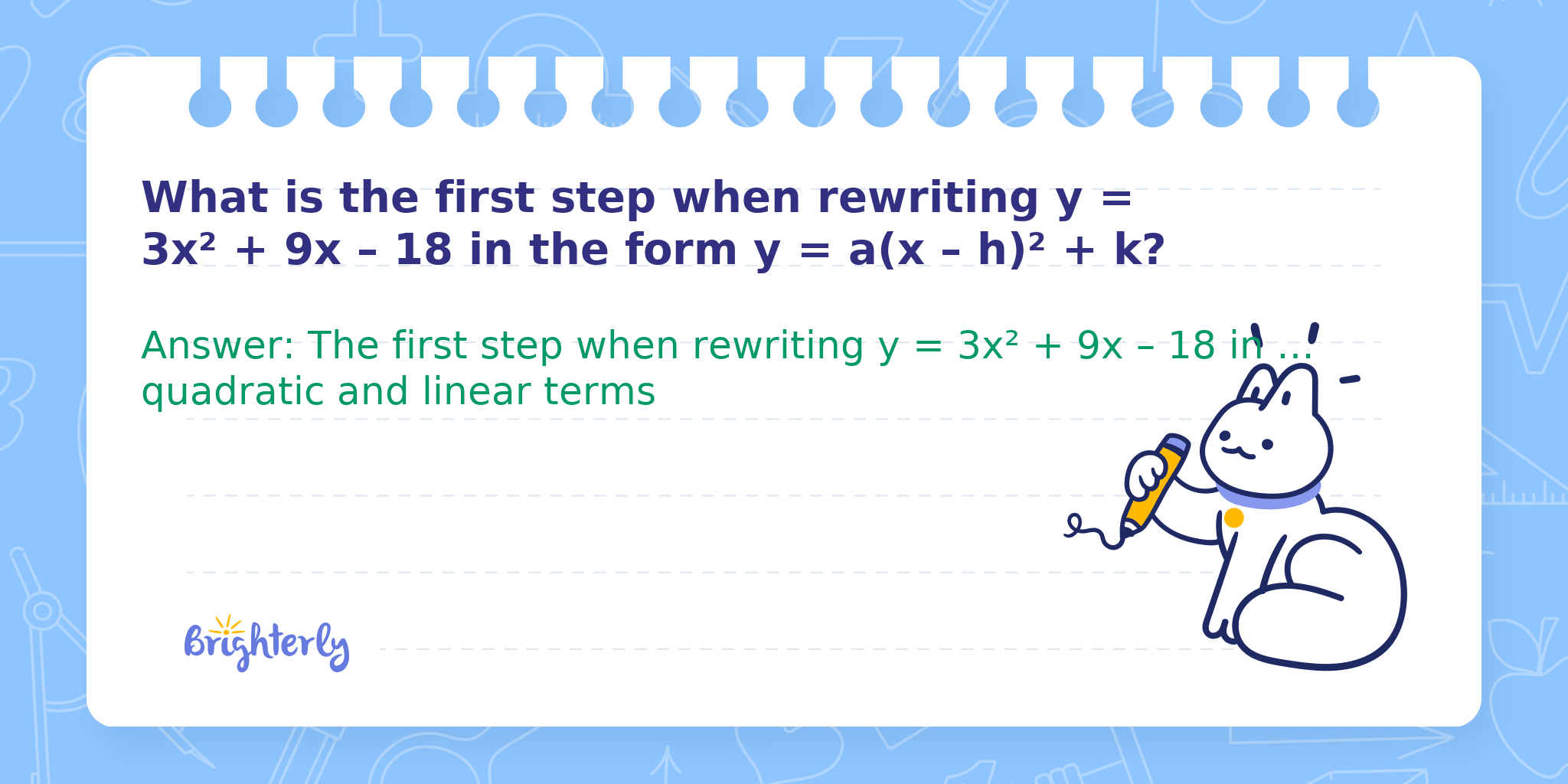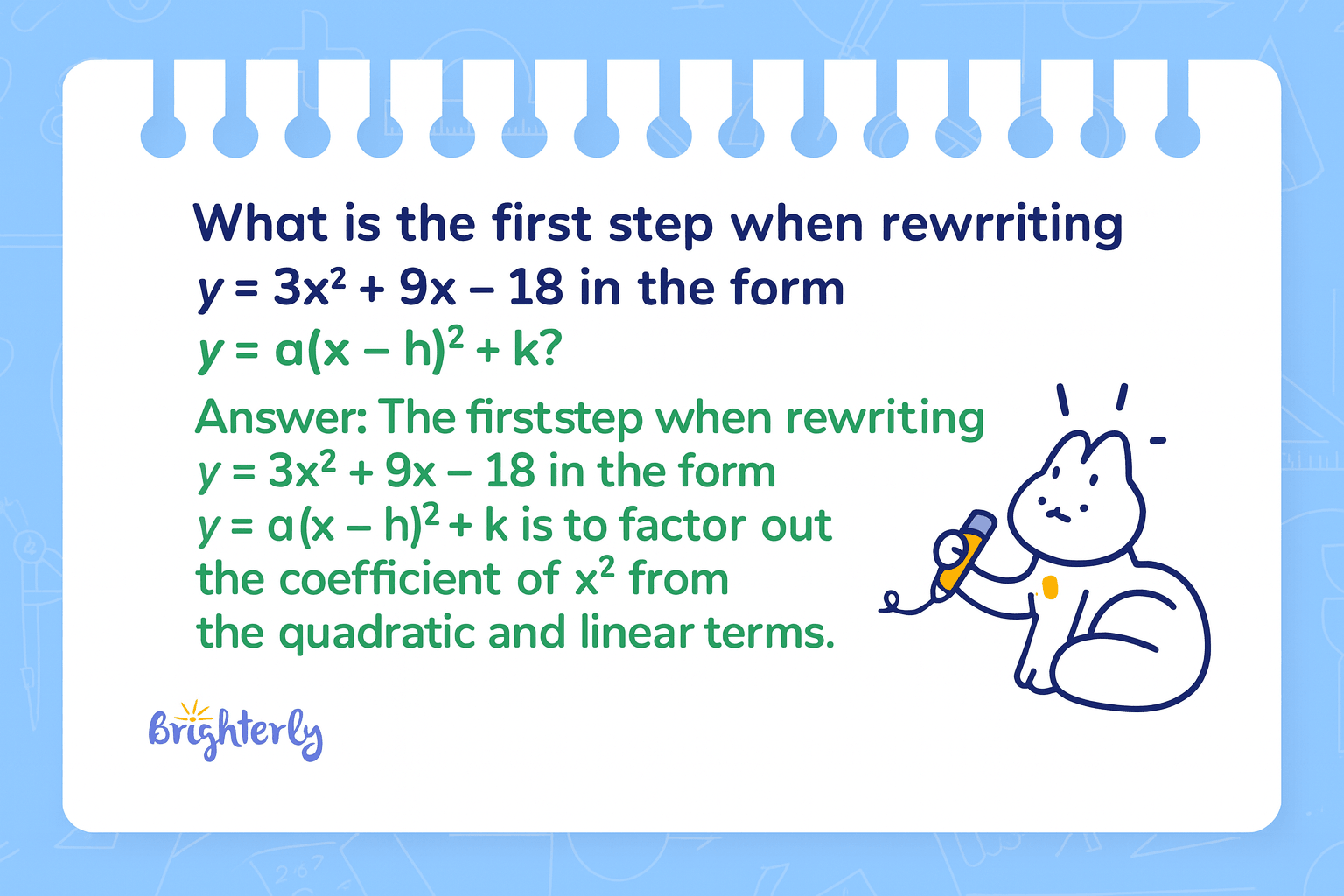
Reviewed by Rachelle Bencio Yu
What is the first step when rewriting y = 3x² + 9x – 18 in the form y = a(x – h)² + k?
Answer: The first step when rewriting y = 3x² + 9x – 18 in the form y = a(x – h)² + k is to factor out the coefficient of x² from the quadratic and linear terms
Rewriting a quadratic equation in the form y = a(x – h)² + k is known as converting it to vertex form. This makes it easier to identify the vertex of the parabola and understand transformations. The process involves completing the square, a systematic method to rewrite the standard quadratic equation into its vertex form.
Methods
Math Tutor Explanation Using Factoring the Leading Coefficient Method
You need to factor out the coefficient of x², which helps in preparing the expression so that you can complete the square more easily.
Step 1: Step 1: Identify and factor out the leading coefficient (in this case, 3) from the x² and x terms
Step 2: Step 2: Write the quadratic part as 3(x² + 3x) – 18
Math Tutor Explanation Using Preparation for Completing the Square Method
Getting ready to complete the square requires isolating x terms inside a parenthesis with a common factor.
Step 1: Step 1: Group the x² and x terms together in parentheses
Step 2: Step 2: Factor the coefficient of x² (3) from the grouped terms to set up for completing the square
Step 1:
Step 2:
Math Tutor suggests: Master Completing the Square and Vertex Form
Deepen your understanding of rewriting quadratic equations into vertex form by practicing related problems that guide you step-by-step through completing the square and similar transformations.
FAQ on Completing the Square and Vertex Form
Why do we factor out the coefficient of x² before completing the square?
Factoring out the coefficient ensures the x² term has a coefficient of 1, making it possible to accurately complete the square.
What is the vertex form of a quadratic equation?
The vertex form is y = a(x – h)² + k, where (h, k) is the vertex of the parabola.
What does completing the square achieve?
Completing the square rewrites the equation so the quadratic and linear terms become a perfect square trinomial, making it possible to find the vertex easily.
Can every quadratic be written in vertex form?
Yes, any quadratic equation can be rewritten in vertex form by completing the square.


